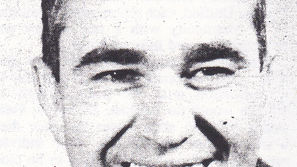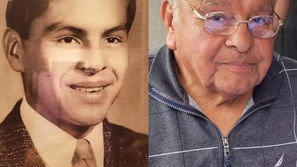Opinion: Consider the gift of a book
- Tyler Takeda
- Dec 18, 2021
- 4 min read
Need a last-minute Christmas gift? Consider a book. I’ve been writing a weekly book review column for the past few months, and I choose new authors as well as writers who have been around for a while.
Over the years, I’ve read more than two thousand books. Some of them I remember in surprisingly vivid detail; these I call “books that stick with me.” Others I don’t remember at all, although I probably enjoyed them at the time. I have no theory as to why certain books have such “stick-to-itiveness,” but I’m relatively sure that the reason varies from person to person.
The first book
The first book that I remember well is one that I read before I was old enough to go to school. It was a Perry Mason mystery, “The Case of the Careless Kitten” by Erle Stanley Gardner. I don’t know why I was able to read at such a young age, and I don’t know why that particular book “stuck” with me because I don’t remember any others until I was 16, at which time I read at least three books that I’ll never forget: Herman Wouk’s “The Caine Mutiny,” Kenneth Rolvaag’s “Giants in the Earth,” and A.B. Guthrie’s “The Big Sky.”
Within the next two or three years, I read George Orwell’s “1984,” Aldous Huxley’s “Animal Farm,” and James Jones’ “From Here to Eternity.” I doubt that anyone who has read the Orwell and Huxley books can forget either. Along with Jones’ novel, they have become part of our “literary culture.”
The college years
During the years that I spent in college, I tended to read less fiction, for obvious reasons, but I searched the paperback racks in used-book stores for humorous novels which I read to take the pressure off studying, writing term papers, and taking tests. Max Shulman (“Sleep till Noon,” “Rally Round the Flag, Boys,” and many others) was one of my favorite humorists. Older people may remember his “The Many Loves of Dobie Gillis” because it was the basis for a popular television series on CBS from 1959 to 1963.
However, during those years, I read a number of short stories and novellas, and a few of them have “stuck with me.” James Jones’ “The Pistol” never received the acclaim of his longer books, but I was intrigued with the notion that the possession of a single item (in this case, a pistol) could affect the lives of so many people and in such different ways.
Shirley Jackson’s short story, “The Lottery,” was a chilling account of cognitive dissonance where tradition, violence, and human sacrifice merge in an otherwise mundane setting. F. Scott Firtzgerald’s “The Diamond as Big as the Ritz” reminds us that wealth beyond a certain point is absurd. (Hear that, Jeff Bezos?)
I doubt that anyone who has read Franz Kafka’s “Metamorphosis” can forget the story of a man who wakes up in bed and discovers that he’s turned into a horrendous bug. It was probably the stimulus for me to take on his trilogy: “The Castle,” “The Trial,” and “The Penal Colony.”
After college
A couple of months after I finished my master’s degree, I began teaching. For the next few years, I was immersed in post-graduate study, working on lectures, settling in to married life, and teaching summer school for the extra income. But I missed reading for pleasure, and one day I asked a friend in the English Department what books of fiction I should have been reading during the past several years.
The following day, she handed me a list of 100 books. I took that summer off from teaching, bought a hammock, hung it between two trees in my backyard, and methodically went through the collection. I’ve been reading lots of fiction ever since, but perhaps a little less when I was writing my textbooks.
I’ve attempted to read Tolstoy’s “War and Peace” at least three times, but I’ve never even gotten halfway through it. It’s not the length that stumps me. After all, I’ve read Ken Follett’s “Pillars of the Earth” and “The Evening and the Morning,” as well as Herman Wouk’s epic, “The Winds of War” and “War and Remembrance.” I guess, for me, “War and Peace” just didn’t have “stick-to-itiveness.”
James Clavell’s “King Rat,” which was set in a Japanese prisoner-of-war camp, opened the door to his series of books that reveal the foundations of Asian cultures: “Shogun,” “Noble House,” “Gai-Jin,” and others.
I remember David Baldacci’s “Absolute Power,” his first book, published in 1996. I think I’ve read every one of the 40 or more novels that he’s written since then, but I don’t remember any, except for the two which I read within the past couple of months.
Themes
Then there are certain authors who have written many books, each of which follows a certain theme. For example, I don’t think that I can outline any one of Janet Evanovich’s novels, but I can tell you the theme that runs through all 28 of the Stephanie Plum “number” books (i.e., “One for the Money,” “Two for the Dough,” etc.). The same is true for Sue Grafton’s 25-book “alphabet” series (i.e., “A is for Alibi,” “B is for Burglar,” etc.). Grafton died before she could write “Z is for Zillion,” my fantasy of an autobiography of how much money she made from her previous 25 novels.
I owe a lifetime of pleasure to these and hundreds of other authors whose words may be forgotten now but who entertained me for many decades. If you don’t read, try it sometime. You might be amazed at what you’re missing. And your gift of a book could bring unexpected joy to someone else.
Note: In last week’s column, I referred to our military actions in Granada, Panama, Persian Gulf and Bosnia and Herzegovina as “little wars.” I apologize for diminishing the suffering and death that were endured by our soldiers and their families. I was only thinking in terms of monetary costs, not personal loss. That’s not an excuse, and I deeply apologize.
• • •
Jim Glynn, Professor Emeritus of Sociology, may be contacted at j_glynn@att.net.


























Comments